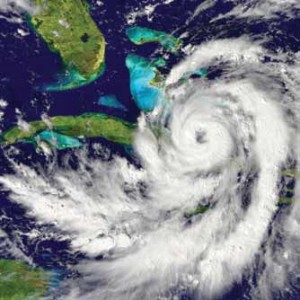Tropical Weather in the late Summer and Fall
The late summer is not the time to turn your back on Mother Nature in Southwest Florida. Mid- September is statistically the height of the Atlantic hurricane season – the great Labor Day hurricane devastated the Florida Keys in 1935 with 185 mph winds and a 20 foot storm surge that put an end to Flagler’s over-sea railroad and barely missed the Naples area on its way north.
Hurricane Donna struck the Collier and Lee coastline on September 10, 1960, causing wide-spread wind damage and flooding, including the destruction of the Naples Pier. October and November can also bring damaging storms to our area, in fact, October has historically had more tropical weather than any of the other months of the year.
Remember, Hurricane Wilma struck here in late October 2005 – so don’t let your guard down yet.
Due in part to a strong El Niño this year, the 2014 hurricane season has been fairly quiet for Southwest Florida – so far. But the El Niño has its greatest mitigating effect on the Cape Verde and Atlantic storms coming off of Africa through the end of September. In the fall storms begin to form up again in the Western Caribbean and the Gulf of Mexico, these later season storms have additional risk to residents in our part of Florida. This comes in the form of less warning time and a greater potential for a landfall and a resulting storm surge from the Gulf.
While tropical storms, rather than hurricanes, become more of a possibility in the fall; they should not be taken lightly. By definition Tropical Storm have winds of less
than 74 mph, but they also have several nasty characteristics which can cause big problems for us. First, they are less organized and the most severe weather can be quite a distance from the center of the storm, additionally they often have tornado activity and heavy rains associated with this severe weather – they also can develop quickly making landfall without much notice to coastal residents.
 That all said, your response and preparedness for these storms should not be all that different than it would be for any hurricane. Keep 3 – 5 days worth of supplies and stay tuned to official information and news. While evacuations during these events are generally less extensive, persons who are dependent on electricity for their well being or those living in fragile housing should still plan on evacuation since these storms still can still result in widespread wind damage and lengthy power outages. A NOAA weather radio becomes an even more important part of your preparedness kit because it can give you warning of an unexpected storm, tornadoes and flooding threats, even when you’re asleep (Tropical Storm Gabrielle gave less than 12 hours of night time warning in 2001). Lastly, securing property prone to wind damage, like boats, patio furniture and other loose items can greatly reduce damage across the community spectrum, including impact to the environment.
That all said, your response and preparedness for these storms should not be all that different than it would be for any hurricane. Keep 3 – 5 days worth of supplies and stay tuned to official information and news. While evacuations during these events are generally less extensive, persons who are dependent on electricity for their well being or those living in fragile housing should still plan on evacuation since these storms still can still result in widespread wind damage and lengthy power outages. A NOAA weather radio becomes an even more important part of your preparedness kit because it can give you warning of an unexpected storm, tornadoes and flooding threats, even when you’re asleep (Tropical Storm Gabrielle gave less than 12 hours of night time warning in 2001). Lastly, securing property prone to wind damage, like boats, patio furniture and other loose items can greatly reduce damage across the community spectrum, including impact to the environment.
Some trivia: Since storm records were first kept, starting in 1851; the first storm recorded in Naples was on November 1, 1861 – a tropical storm with 65 mph winds, the latest tropical storm of the year was on December 1 of 1925 with winds of 70 mph and the earliest was on February 3 in 1952 with 50 mph winds.
For more information on hurricanes and tropical storms and storm preparedness you can visit: www.nch.noaa.gov, or www.collierem.org.
Jim von Rinteln, MA, CFM, CEM, FPEM
Jim von Rinteln is a retired Army officer, a Certified Emergency
Manager and a Certified Floodplain Manager who has served as the
Collier County Emergency Management Operations Coordinator and
CEO of the Southern Gulf Coast Region of the
American Red Cross. He currently lives on Marco
Island with his wife Bonnie where he runs a
consulting firm specializing in disaster mitigation
and recovery issues.
Jim holds an M.A. in Human Resource Management from the Hawaii Pacific University is certified in Florida as a Florida Professional Emergency Manager (FPEM),
internationally by the International Association of Emergency Managers (IAEM) as a Certified Emergency Manager (CEM), by FEMA as a Professional and Advanced Professional in Disaster Operations and by the State Association of Floodplain Managers as a Certified Floodplain Manager (CFM).


Leave a Reply
Want to join the discussion?Feel free to contribute!